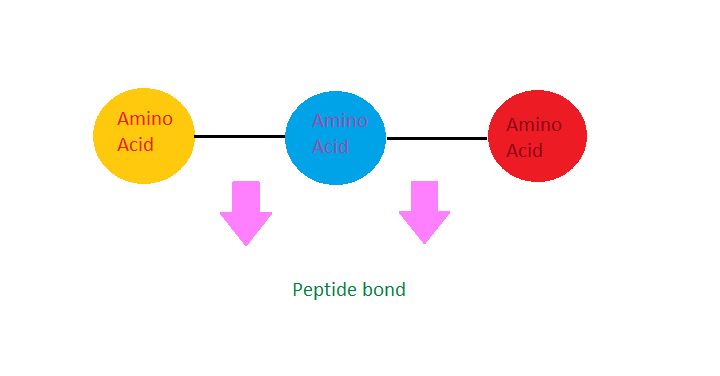Peptide: Difference between revisions
No edit summary |
edited and added an image and a link |
||
| Line 1: | Line 1: | ||
Peptides are | Peptide is a chain varying in length with repeated sequences of a single building blocks also known as monomers. The basic building block used in the peptide chain are Amino Acids and there are around 20 Amino Acids which are found naturally. <br>Peptides are formed when two or more Amino Acids condense (lose of water molecule H2O) and forms a peptide bond in between (Figure 1), when a molecule consists of 2 up to 50 Amino Acid it is referred to as a peptide. However, when it exceeds 50 Amino Acid it is called a protein. <br>Peptides are found in the human body in every cell and tissue, depending on the structural sequence of the Amino Acid in the peptide the function of it is determined respectively. <br>The most familiar activity of peptides in the human body acts as a hormone, the basic function in which signals and messages are send across body tissues and cells. There are two main classes of hormonal peptides, the first is peptide hormone which are produced in glands, and some other parts such as the stomach, the intestine and brain. An example of a peptide hormone is in blood glucose regulation such as insulin and glucagon. Hormonal peptides can be also found in glands and the brain, an example would be antidiuretic hormone also known as (ADH) which is released in the blood to regulate the water in the body. <br> | ||
[[Image:Peptide_+_peptide_bond.png]] | |||
References | |||
Zealandpharma. What are Peptides. n.d. [cited 14/11/2016] Available from : http://zealandpharma.com/research-and-development/key-zealand-peptide-competences/what-are-peptides<br><br> | |||
Revision as of 19:51, 14 November 2016
Peptide is a chain varying in length with repeated sequences of a single building blocks also known as monomers. The basic building block used in the peptide chain are Amino Acids and there are around 20 Amino Acids which are found naturally.
Peptides are formed when two or more Amino Acids condense (lose of water molecule H2O) and forms a peptide bond in between (Figure 1), when a molecule consists of 2 up to 50 Amino Acid it is referred to as a peptide. However, when it exceeds 50 Amino Acid it is called a protein.
Peptides are found in the human body in every cell and tissue, depending on the structural sequence of the Amino Acid in the peptide the function of it is determined respectively.
The most familiar activity of peptides in the human body acts as a hormone, the basic function in which signals and messages are send across body tissues and cells. There are two main classes of hormonal peptides, the first is peptide hormone which are produced in glands, and some other parts such as the stomach, the intestine and brain. An example of a peptide hormone is in blood glucose regulation such as insulin and glucagon. Hormonal peptides can be also found in glands and the brain, an example would be antidiuretic hormone also known as (ADH) which is released in the blood to regulate the water in the body.
References
Zealandpharma. What are Peptides. n.d. [cited 14/11/2016] Available from : http://zealandpharma.com/research-and-development/key-zealand-peptide-competences/what-are-peptides
